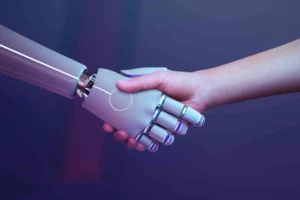Introduction
Unleash the Future of Automotive Manufacturing! Dive into the transformative power of real-time monitoring and visual intelligence systems. Discover how these game-changers redefine efficiency, quality, and safety, propelling your industry towards unmatched precision and adaptability. Don’t miss out on the evolution – seize the opportunities now!
Navigating the Dynamic Terrain
In the ever-evolving landscape of automotive manufacturing, the integration of real-time monitoring and analysis is not just a strategy; it’s a necessity. Visual intelligence systems stand as a cornerstone, offering multifaceted benefits that redefine efficiency, quality, and safety in the industry.
Unveiling the Power of Visual Intelligence Systems
Visual intelligence systems, leveraging cutting-edge technologies, are proving indispensable in providing a holistic understanding of the production environment. This article delves into an extended exploration of the myriad advantages that these systems bring to the automotive manufacturing table.
Augmenting Efficiency on the Production Line
Unraveling Real-Time Data Insights
Breaking free from reliance on historical data, real-time insights empower manufacturers to make instantaneous decisions, optimizing processes dynamically.
Propelling Predictive Maintenance
Beyond immediate insights, visual intelligence systems predict equipment failures in advance, allowing for proactive maintenance. This proactive approach not only curtails downtime but also elongates the lifespan of critical machinery.
Slashing Downtime
The amalgamation of real-time insights and predictive maintenance translates into a significant reduction in downtime, amplifying productivity and yielding substantial cost savings for manufacturers.
Elevating Quality Assurance and Defect Detection
Precision in Visual Inspection
Visual intelligence systems exhibit exceptional prowess in detecting even the minutest defects during the production process, ensuring that only products of unparalleled quality make it to the market.
Swift Identification of Defects
By identifying defects as they manifest, manufacturers can address issues promptly, preventing defective products from progressing further down the production line.
Fostering Improved Overall Product Quality
The infusion of visual intelligence contributes to a quantum leap in overall product quality, fortifying the reputation and reliability of automotive manufacturers.
Advancements in Safety Measures
Vigilant Worker Safety Monitoring
Beyond merely overseeing production, visual intelligence systems contribute to a safer working environment by monitoring and alerting supervisors to potential safety hazards in real time.
Mitigating Accidents on the Production Floor
Proactive safety measures, facilitated by visual intelligence, significantly reduce the likelihood of accidents on the production floor, safeguarding both equipment and personnel.
Financial Optimization and ROI Maximization
Streamlining Resource Allocation
Visual intelligence systems optimize resource allocation, ensuring that materials and manpower are deployed efficiently, leading to tangible cost savings.
Long-term Financial Windfalls
While initial implementation may incur costs, the long-term financial benefits, encompassing reduced downtime and elevated product quality, present a compelling return on investment.
Integration with Industry 4.0 (Visual intelligence systems)
Pioneering the Fourth Industrial Revolution
Visual intelligence systems emerge as pivotal players in the Industry 4.0 revolution, fostering seamless communication and collaboration between interconnected machines and systems.
Nurturing Collaborative Manufacturing Processes
The integration of visual intelligence not only facilitates automation but also fosters collaborative manufacturing processes, where automation and human expertise synergize for optimal results.
Emerging Trends and Technological Frontiers
Pioneering Technologies in Real-time Monitoring
Continuous technological advancements promise increasingly sophisticated real-time monitoring capabilities, propelling visual intelligence systems to new heights.
Anticipating System Advancements
Anticipated developments include refined machine learning algorithms and enhanced integration with other smart manufacturing technologies, further augmenting the potential of visual intelligence systems.
Navigating Challenges with Strategic Solutions
Confronting Common Obstacles Head-On
While implementation may present challenges, proactive measures ensure a smoother integration process for visual intelligence systems.
Strategizing to Overcome Challenges
Effective strategies include comprehensive training programs, continuous system upgrades, and collaborative efforts with experienced vendors to navigate challenges seamlessly.
Balancing Automation with Human Expertise
The Essential Role of Human Operators
Despite automation, skilled human operators remain irreplaceable, overseeing, interpreting, and fine-tuning visual intelligence systems for optimal performance.
Harmonizing Automation and Human Skills
Achieving synergy between automation and human expertise ensures a harmonious balance, leveraging the strengths of both for optimal outcomes.
Crucial Implementation Considerations
Selecting the Right Visual Intelligence System
Choosing a system aligned with specific manufacturing needs is paramount. Factors like scalability, integration ease, and adaptability should guide the selection process.
Empowering the Workforce through Training
A successful implementation hinges on a well-trained workforce. Training programs should encompass both technical proficiency and the ability to interpret visual data.
Industry Embrace and Recognition
Surge in Popularity in Automotive Manufacturing
The automotive industry witnesses a surge in the adoption of visual intelligence systems, acknowledging their transformative benefits and positive impact on operational efficiency.
Recognized Endorsement by Industry Experts
Experts within the automotive manufacturing sector underscore the transformative benefits of visual intelligence, providing further endorsement for widespread adoption.
Environmental Responsibility
Sustainable Energy-efficient Processes
Visual intelligence systems contribute to sustainable practices by optimizing processes, reducing waste, and enhancing overall efficiency.
Aligning with Sustainability Goals
The reduction of waste and energy optimization align with broader sustainability goals, positioning visual intelligence systems as contributors to environmental responsibility.
Regulatory Adherence
Meeting Stringent Industry Standards
Visual intelligence systems must adhere to industry standards and regulations to ensure the ethical and legal use in automotive manufacturing.
Ensuring Ethical Compliance
Manufacturers must actively ensure that their implementation and use of visual intelligence systems align with regulatory frameworks and ethical guidelines.
Conclusion
Recapitulation of Diverse Benefits
In summary, the advantages of real-time monitoring and analysis with visual intelligence systems in automotive manufacturing are extensive, ranging from heightened efficiency to improved safety and environmental sustainability.
Urging Universal Adoption in Automotive Manufacturing
As technology continues its relentless march forward, the adoption of visual intelligence is not merely a strategic option; it’s an imperative for automotive manufacturers striving for excellence in an increasingly competitive market.
In summary, the integration of real-time monitoring and visual intelligence systems propels automotive manufacturing into a new era of efficiency and quality. Embrace innovation for sustained success. Stay updated on industry advancements by following our LinkedIn page ! By ensuring product safety, compliance, and consistency, these systems safeguard brand reputation and consumer trust. The integration of artificial intelligence, 3D vision technology, and automation propels Vision Inspection Systems into the future, where they will continue to play a pivotal role in quality assurance across industries. For further inquiries or a demo, you can Contact Trident Information Systems.





